20 Zone 8 Plant Ideas For The Lower South
Perennials, shrubs, and vines that will thrive in your Southern garden.
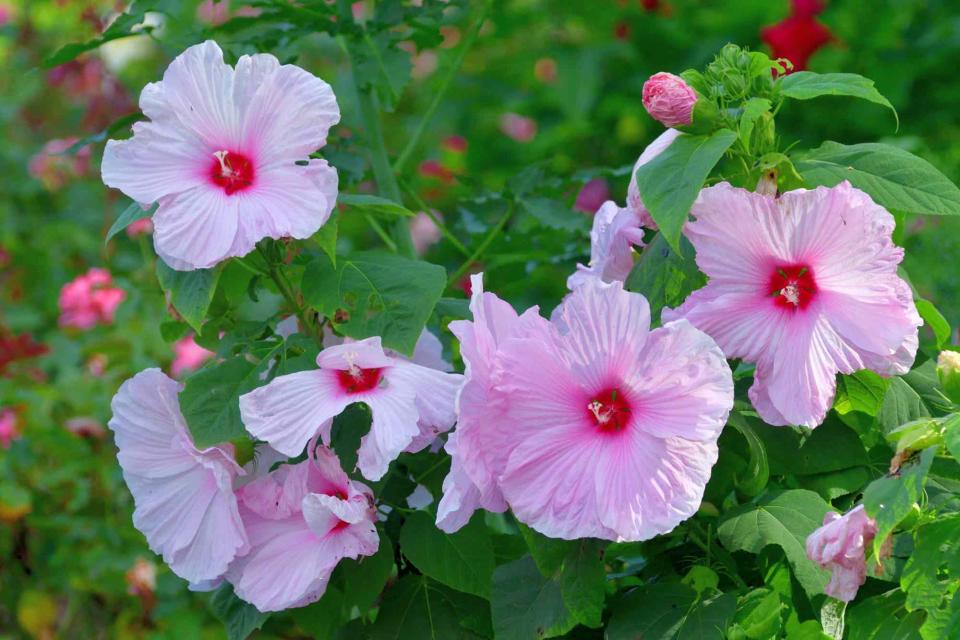
Characterized by mild winters and a long growing season, USDA Zone 8 includes the Lower South and affords almost year-round opportunities for gardening. It is one of the warmest zones in the United States, running from the Virginia coast out to central Texas.
Zone 8 is defined by winters where the temperature dips to 10-20° F at its most extreme. Enjoying typically mild winters, some Zone 8 plants experience multiple blooming and fruiting seasons. But the Southeast also experiences steamy summers, and plants must stand up to the intense summer heat in order to survive. If you're not sure what to plant or are looking for some inspiration, here's a list of our favorite perennials, evergreens, vines, shrubs, and trees that will thrive year after year in a Zone 8 garden.
Salvia
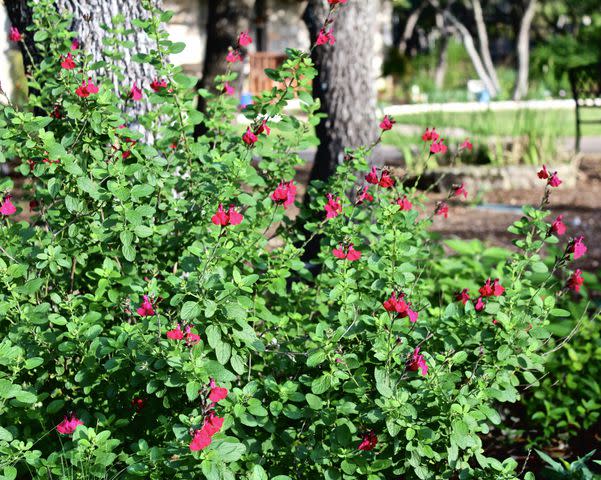
Diana Kirby
Botanical Name: Salvia spp.
Sun Exposure: Full, partial
Soil Type: Well-draining, rich
Soil pH: 6.0-8.0
USDA Hardiness Zones: 5-10
Salvias come in every size and color imaginable, with more than 900 species to choose from worldwide. Salvia is the largest genus of plants in the mint family and drought-tolerant once established. Salvia includes evergreen shrubs, herbaceous perennials, and annuals. One of the most common go-to-salvias, Autumn sage (Salvia greggii), is an evergreen sub shrub with blooms in shades of red to fuchsia and purple. This salvia graces countless Lower South gardens, growing 2 to 3 feet tall and wide. Other salvias range from 18 inches tall to 5 feet tall with varieties for both sun and part shade.
Zexmenia
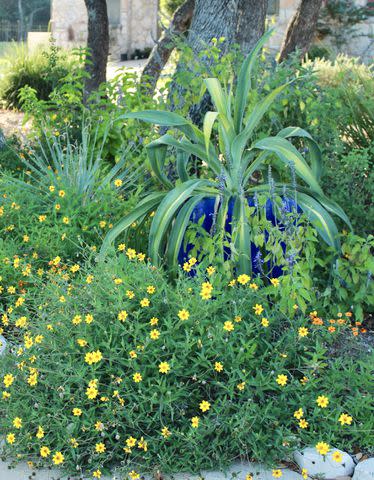
Diana Kirby
Botanical Name: Wedelia hispida, W. acapulcensis var. hispida, Zexmenia hispida
Sun Exposure: Full
Soil Type: Well-draining
Soil pH: 6.5-8.5
USDA Hardiness Zones: 7-11
Zexmenia is a stellar garden performer, even in the hottest, driest summer conditions and the rockiest soils. The hardy Texas native is evergreen in warmer climates and blooms from summer through fall. It can survive in Zone 7, dying back in winter and returning consistently each spring. This mounding plant sports perky, yellow daisy-like flowers and reaches approximately 2 feet tall and 2 to 3 feet wide. Pollinators are drawn to this prolific bloomer. The rough, hairy gray-green leaves make Zexmenia deer resistant. Cut back by half in July to encourage another flush of fall flowering.
Catmint
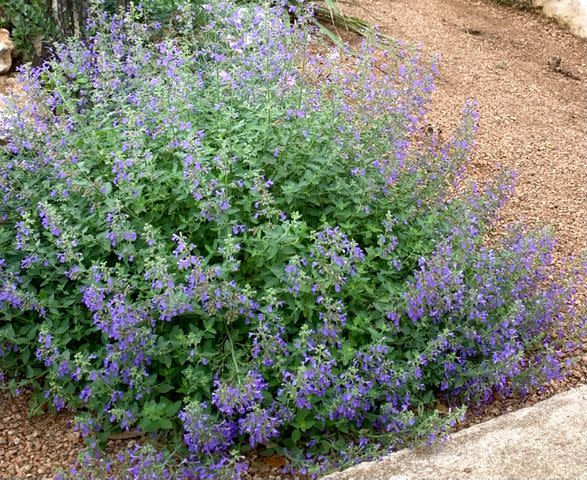
Diana Kirby
Botanical Name: Nepeta x faassenii
Sun Exposure: Full, partial
Soil Type: Well-draining
Soil pH: 6.0-8.0
USDA Hardiness Zones: 5-9
Few perennials can compare to the long-lasting, showstopping blooms of catmint. This dynamo packs a pale purple punch from late spring into early fall. Its compact, mounding form is tailor-made for borders, pathways, and rock gardens. Cousin to the feline favorite catnip, this herbaceous perennial grows 6 to 12 inches tall by 12 to 36 inches wide. Flowers grow along the stems in whorls, enveloping almost the entire plant in blooms. Its minty, fuzzy, gray-green leaves make it rabbit and deer resistant. Catmint adapts to any well-draining soil, is heat- and drought-tolerant, and requires little to no care once planted. Deadheading or shearing mid-summer will encourage a bushier plant and more blooms.
Lion’s Tail
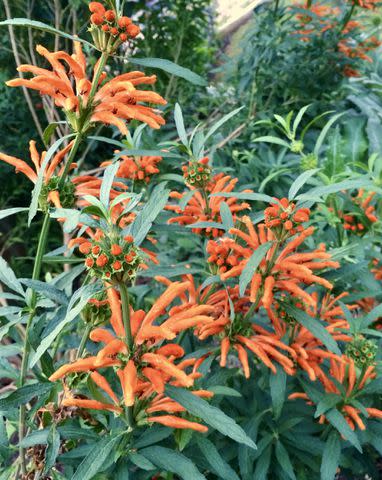
Diana Kirby
Botanical Name: Leonotis leonurus
Sun Exposure: Full
Soil Type: Well-draining
Soil pH: 6.5-7.5
USDA Hardiness Zones: 8-11
Native to South Africa, Lion’s Tail could vie for the King of the Garden title, with its striking blooms and majestic form. Lion’s Tail is a semi-evergreen perennial that grows 4 to 6 feet tall and 4 to 6 feet wide. It dies back to the ground in Zone 8 winters, and will not survive in wet, cold soils. With brilliant orange flowers that grow on upright stems, the tiered tufts are reminiscent of lion’s tails. The fuzzy tubular blooms are also hummingbird and pollinator magnets. This exotic, late summer to early fall specimen keeps the garden glowing when summer bloomers start to fade. Its tall, striking stems filled with flowers also make stunning focal points for floral arrangements. It is also used as an herb used to treat a variety of medical conditions including headaches, fevers, coughs among others.
Pink Skullcap
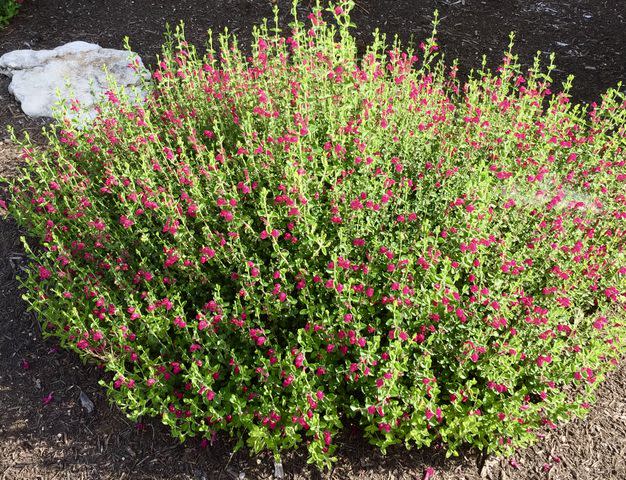
Diana Kirby
Botanical Name: Scutellaria suffretescens
Sun Exposure: Full, partial
Soil Type: Well-draining, sandy, rocky
Soil pH: 6.5-8.0
USDA Hardiness Zones: 7-10
Amp up the wow factor in your layered garden with a border of pink skullcap. This woody, herbaceous perennial blooms continuously from late spring to early fall. With snapdragon-like tubular flowers, gray-green leaves and a tidy, low mounding habit, skullcap makes an attractive addition to borders, rock gardens, or sloping hillsides. A Mexican native in the mint family, skullcap is heat- and drought-tolerant, and disease and pest resistant. It grows from 1.5 feet tall and 2-3 feet wide, fitting for xeric mass plantings or a dense, spreading groundcover. Depending on the location, it can remain semi-evergreen in winter. Shear back in early spring to shape and encourage more profuse blooms.
Ruby Grass
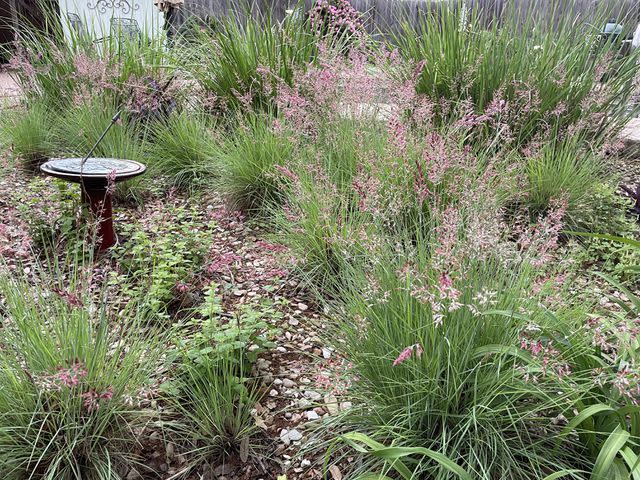
Botanical Name: Melinis nerviglumis
Sun Exposure: Full
Soil Type: Well-draining
Soil pH: 5.5-7.5
USDA Hardiness Zones: 8-10
While beautiful blooms often get top billing in gardens, stunning grasses add an unparalleled design element. The soft, billowy texture of this African native provides dimension to the landscape and creates delicate contrast for sculptural plants. Ruby grass grows 18 to 24 inches tall and 16 to 16 inches wide in eye-catching clumps. In summer, the neat mounds of gray-green foliage give rise to fuzzy, pink panicles. The shimmering ruby inflorescence adds rhythm and movement, to the garden. Plant in lines along a path or bordering a bed, or plant in masses to create more impact. In late summer to early fall, the panicles begin to turn silvery white, catching the light as they wave in the breeze. Ruby grass also makes an interesting addition to cut and dried flower arrangements.
Distylium
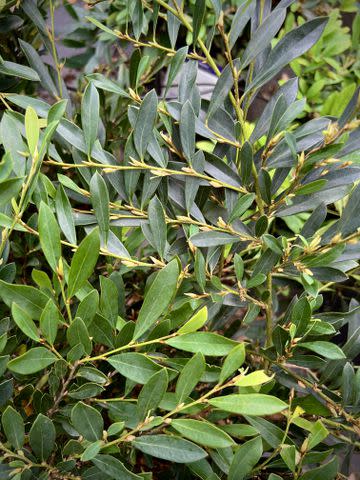
Diana Kirby
Botanical Name: Distylium spp.
Sun Exposure: Full, partial
Soil Type: Well-draining, moist
Soil pH: 5.0-6.5
USDA Hardiness Zones: 6-9
A powerhouse evergreen, distylium is a versatile, low-maintenance shrub that adapts to most soils and is suitable for foundation plantings, borders, and hedges. It's fine texture and dense, tumbling growth habit are excellent alternatives to hollies, boxwoods, or junipers. Distylium provides winter interest, sporting small maroon blooms from January until March. The foliage ranges from glossy blue green to coppery bronze, depending on the variety. Naturally compact, distylium will hold its shape when planted in the sun and have a more open shape in shade. Lightly tip prune in summer to encourage new growth. Disease-, pest-, and deer-resistant, this shrub can take the heat and performs reliably in both wet and drought situations. Native to Asia, variety sizes range from 2 feet tall to 3 feet wide to up 10 feet tall and 8 feet wide.
Wax Myrtle
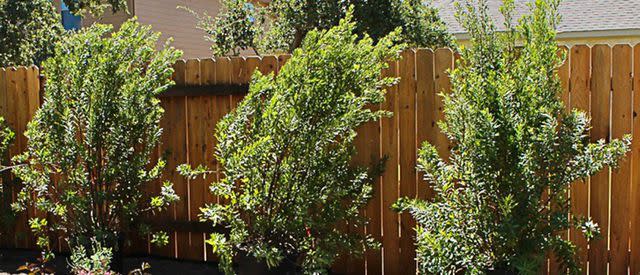
Diana Kirby
Botanical Name: Morella cerifera
Sun Exposure: Full, partial
Soil Type: Average, sandy, moist
Soil pH: 5.5-7.0
USDA Hardiness Zones: 7-10
Wax myrtle is one of the fastest growing large shrubs available and provides a striking screen for privacy, foundation plantings, and property borders. This evergreen shrub can grow as fast as 3 to 5 feet a year in optimal conditions. They need consistent moisture when first planted, but are drought-tolerant once established. Wax myrtle is available in dwarf and full sizes and can make an attractive small tree when pruned to create fewer trunks and a raised canopy. Bees and butterflies are drawn to highly fragrant March and April blooms produced by female plants. From fall through winter, the flowers are followed by weeping clusters of dusty blue berries prized by birds. Male plants are required nearby for pollination of females to occur. A good choice for coastal areas, wax myrtles are wind and salt-tolerant.
Dwarf Yaupon Holly
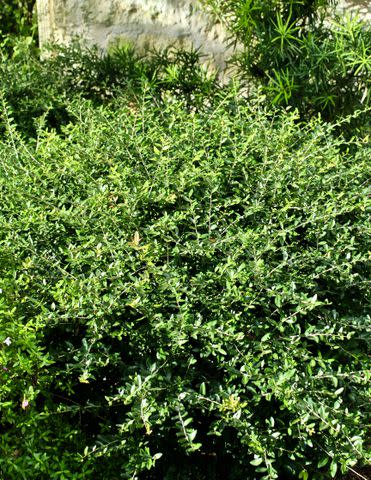
Diana Kirby
Botanical Name: Ilex vomitoria
Sun Exposure: Full, partial
Soil Type: Average, well-draining
Soil pH: 4.5-7.0
USDA Hardiness Zones: 7-10
A mounded evergreen shrub, dwarf yaupon holly supplies superior structure in the garden. This dense and bushy shrub requires little to no maintenance. Its natural, globe-like form makes it a preferred choice for manicured or formal garden styles. Used for foundation plantings, low hedges, or sculptural elements, dwarf yaupon holly sports tiny white blooms from spring to early summer. If the planting includes both male ('Schillings' or 'Stoke's Dwarf') and female ('Nana') plants required for cross pollination, they will also produce bright red berries that attract birds. Yaupon’s small, dark shiny leaves are finely textured. This broadleaf evergreen grows to 2 to 4 feet tall and 4 to 5 feet wide. For a tidy evergreen patio addition, it can also be grown in pots.
Coral Honeysuckle
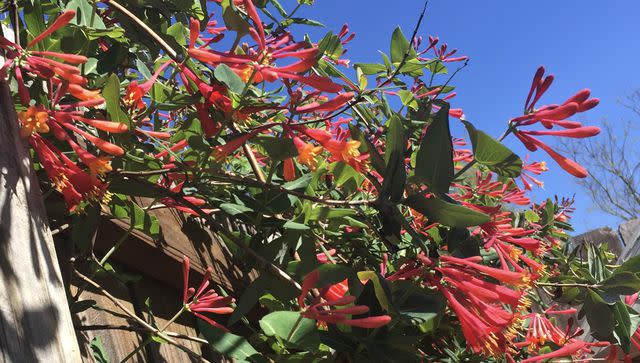
Diana Kirby
Botanical Name: Lonicera sempervirens
Sun Exposure: Full, partial
Soil Type: Rich, well-draining
Soil pH: 6.0-7.5
USDA Hardiness Zones: 4-9
A profuse bloomer, coral honeysuckle is an adaptable, low-maintenance native without the overwhelming tendencies of its invasive Japanese relative. This woody twining vine yields tubular-shaped flowers in red and coral with yellow to orange throats. It blooms from spring to fall, attracting hummingbirds and butterflies. From summer to fall, it produces bright red berries enjoyed by songbirds. Evergreen in warm climates, coral honeysuckle grows 15 to 25 feet tall and 15 to 25 feet wide. Give it a fence, trellis, or arbor and this twining vine will reward you with a vigorous vertical focal point to enjoy through three seasons. Coral honeysuckle is disease and deer-resistant.
Yucca
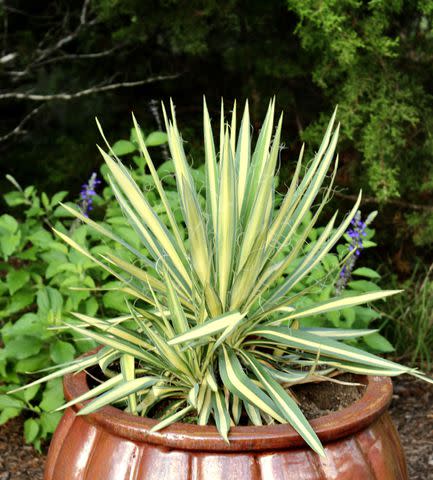
Diana Kirby
Botanical Name: Yucca filamentosa
Sun Exposure: Full, partial
Soil Type: Well-draining
Soil pH: 6.5-7.5
USDA Hardiness Zones: 4-10
This clump-forming evergreen reaches 2 feet tall to 4 feet wide with fragrant bloom spikes up to 5 feet tall. Yucca provides structure and texture to add interest in the garden. The green leaves and bright yellow edges of 'Bright Edge' pair well with more delicate plants and flowing forms. It can also be used as a container plant. Yucca doesn’t typically begin blooming until the plant is mature, blooming in June and July. Mature plants also spread by pups that can be dug up and planted in other locations. The flowers attract pollinators and hummingbirds and the foliage is deer- and rabbit-resistant.
Crepe Myrtle
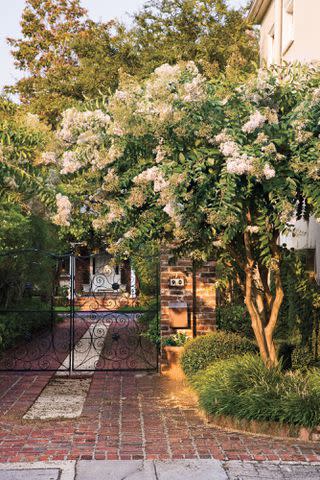
Botanical Name: Lagerstroemia indica
Sun Exposure: Full
Soil Type: Average, well-draining
Soil pH: 5.5-6.5
USDA Hardiness Zones: 6-9
Crepe myrtles are weighed down with red, pink, white, or purple blooms in the height of summer in the South. The papery tan bark of these small trees is an attractive feature in winter. Best of all, it can tolerate both dry and wet soil and adapts to most acidic soils with decent drainage—even clay. Crepe myrtles make attractive specimen trees or street trees, with varieties ranging from 6 to 30 feet in height.
Hardy Hibiscus
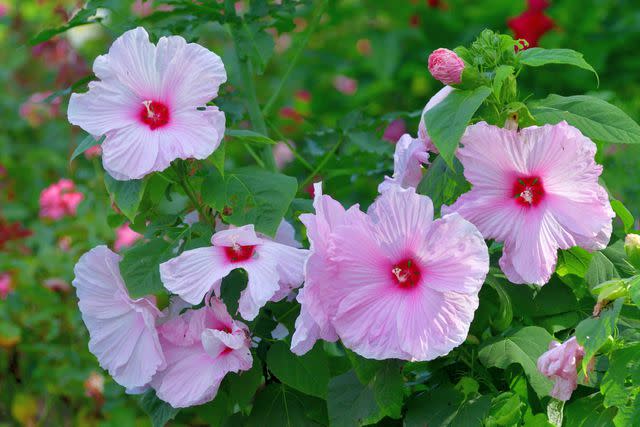
Botanical Name: Hibiscus moscheutos
Sun Exposure: Full, partial
Soil Type: Average, well-draining
Soil pH: 5.5-6.5
USDA Hardiness Zones: 5-9
Also called swamp or rose mallow, this summer-blooming hibiscus is a native of the Southeast. The big pink, white, or red flowers can span a foot across, attracting all manner of butterflies and hummingbirds during its long bloom period of a month. Hardy hibiscus grows as a small deciduous shrub that is 2-6 feet tall and 2-5 feet wide. These shrubs are happiest in consistently moist, loamy, and sandy loam soils.
Southern Magnolia
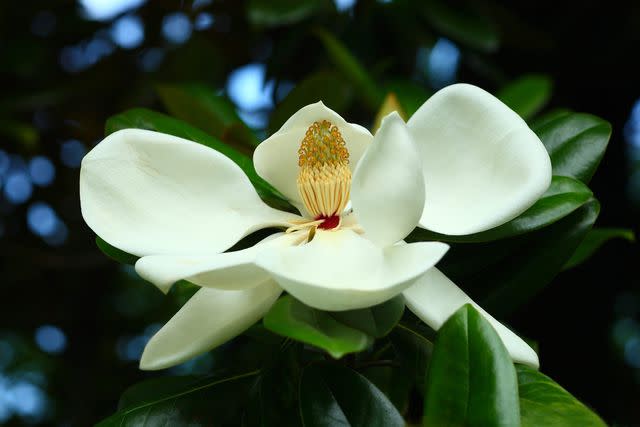
Botanical Name: Magnolia grandiflora
Sun Exposure: Full, partial
Soil Type: Rich, moist, well-draining
Soil pH: 5.5-6.5
USDA Hardiness Zones: 6-10
As the name implies, this native evergreen tree is highly suitable for southern gardens. The massive, leathery white flowers appear in late spring and summer and have a wonderful fragrance. Southern magnolia grows quite large in the native landscape—up to 80 feet tall—but there are several cultivars that fit into smaller gardens. One of the most popular, 'Little Gem', grows to 20 feet tall in 20 years. Magnolias generally have no issue with sweltering summers, but appreciate a layer of mulch and a bit of protection from afternoon sun in a hotter climate.
Verbena
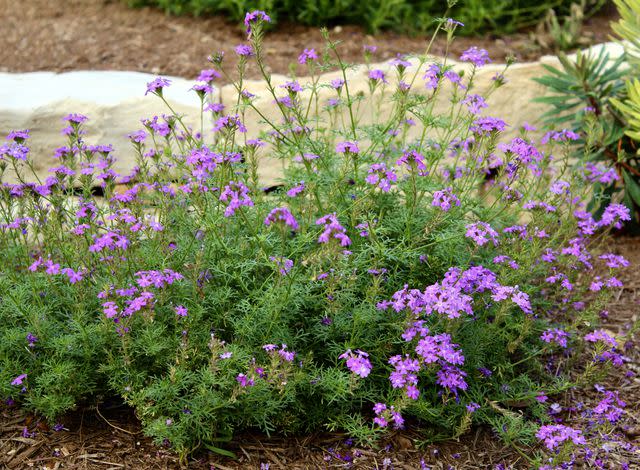
Diana Kirby
Botanical Name: Verbena spp.
Sun Exposure: Full
Soil Type: Well-draining
Soil pH: 5.8-7.2
USDA Hardiness Zones: 7-11
Whether you're looking for a tall statement perennial, a tough flowering ground cover, or a pop of color in the flower bed, there's a verbena to fill that role. This large plant family consists of mostly sun-loving species with purple, pink, blue, or white blooms. Verbena thrives in well-draining soil (add a little compost to poor, sandy soils). These plants look their best with an inch of water a week, but otherwise require little fuss.
Lantana
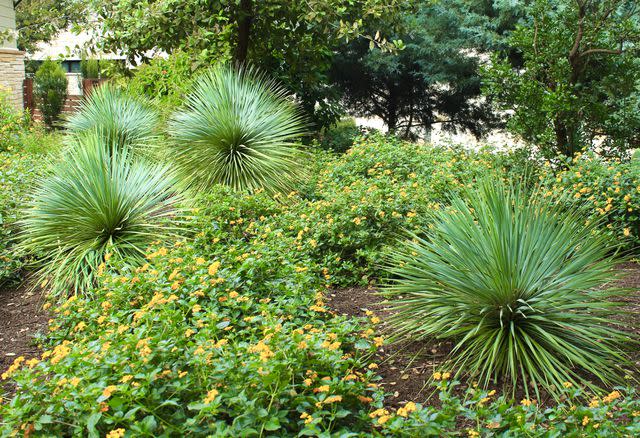
Diana Kirby
Botanical Name: Lantana camara
Sun Exposure: Full
Soil Type: Well-draining
Soil pH: 6.0-6.5
USDA Hardiness Zones: 7-11
Lantanas thrive in hot, dry weather and tolerate just about any well-drained soil. Their gold, orange, pink, red and white flower clusters are a magnet for butterflies. Common lantana is an herbaceous Central American shrub that grows 5 or 6 feet tall, but there are many compact varieties designed for the flower bed. Lantana needs less water than many annuals, but appreciates a good drink during dry weather. A related species, trailing lantana (L. montevidensis), is hardy to Zone 8 and can be grown along walls or as a ground cover.
Giant Hyssop
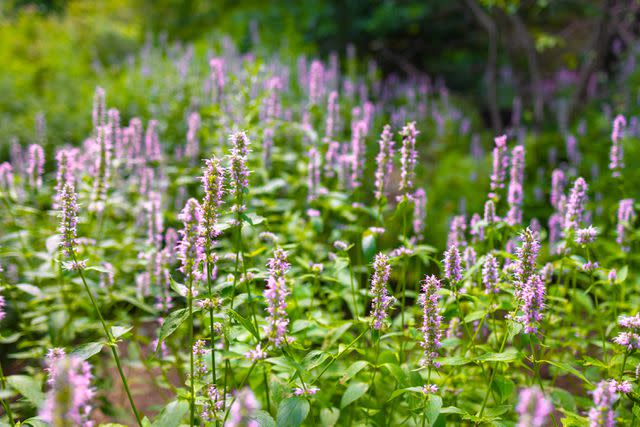
Getty Images / Catherine McQueen
Botanical Name: Agastache spp.
Sun Exposure: Full
Soil Type: Well-draining, sandy, loamy
Soil pH: 6.0-7.5
USDA Hardiness Zones: 5-10
Giant hyssop is also called hummingbird mint, a big clue this is a pollinator-friendly family of perennials. Most are native to North America and bloom throughout the summer in white, blue, purple, or pink. Giant hyssop must have well-draining soil to do well, but can be grown in a raised bed or containers if you have heavy soil. The plants are deer- and rabbit-resistant, but the fragrant leaves can be used in teas.
Panicle Hydrangea
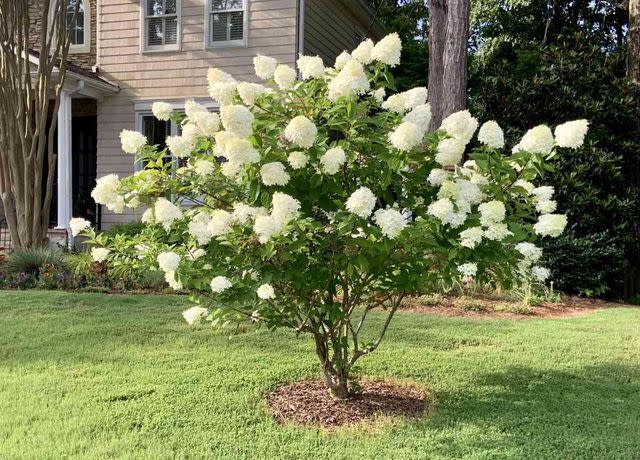
Botanical Name: Hydrangea paniculata
Sun Exposure: Full, partial
Soil Type: Well-draining
Soil pH: 6.0-7.5
USDA Hardiness Zones: 3-9
Panicle hydrangeas like 'Limelight' and 'Little Lime' are more tolerant of hot sun and dry conditions than most hydrangeas, make them an excellent choice for Zone 8. They adapt to most soils but prefer good drainage and a layer of mulch to help conserve moisture. Depending on the variety, most grow from 3-12 feet tall and wide, with some slowly growing into a small tree. Fluffy, cone-shaped flower clusters usually start a creamy white and can age to a bright pink before turning brown.
Star Jasmine
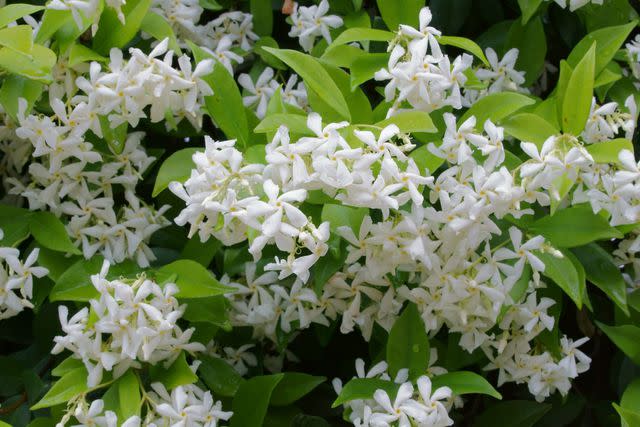
Botanical Name: Trachelospermum jasminoides
Sun Exposure: Partial
Soil Type: Rich, well-draining
Soil pH: 6.0-7.0
USDA Hardiness Zones: 8-10
The heady scent of star jasmine is a harbinger of spring in many Southern cities. This vigorous evergreen climber is very shade tolerant and requires little watering after the first year. The vines can grow 3 to 6 feet per year once they get established, producing prolific star-shaped blooms that attract bees. Star jasmine can be grown on a trellis or fence or even clipped into a hedge. Prune the vines right after flowering to ensure the best show of flowers the following year.
Gaura
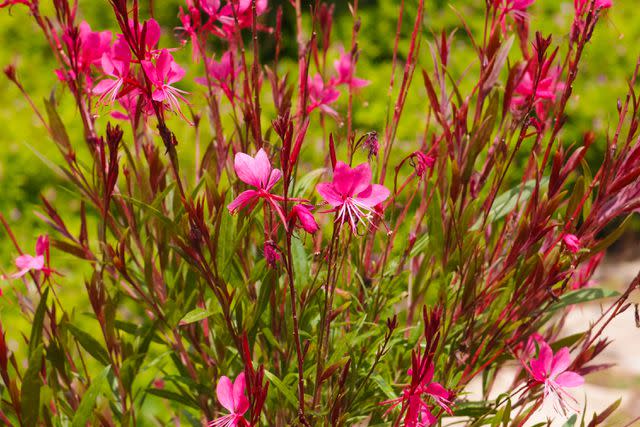
Getty Images / ANGHI
Botanical Name: Oenothera lindheimeri
Sun Exposure: Full
Soil Type: Well-draining, loamy, sandy
Soil pH: 6.0-7.5
USDA Hardiness Zones: 5-9
Gaura is native to Texas and Louisiana where it grows in pine lands and prairies. The wispy flowers that emerge from small clumps can be white or pink. Plant this perennial in cottage garden borders or with grasses where it can wave in the breeze. Gaura blooms better with moisture, but its taproot makes it drought-tolerant. Overly rich soil or shade can make it flop.
For more Southern Living news, make sure to sign up for our newsletter!
Read the original article on Southern Living.

